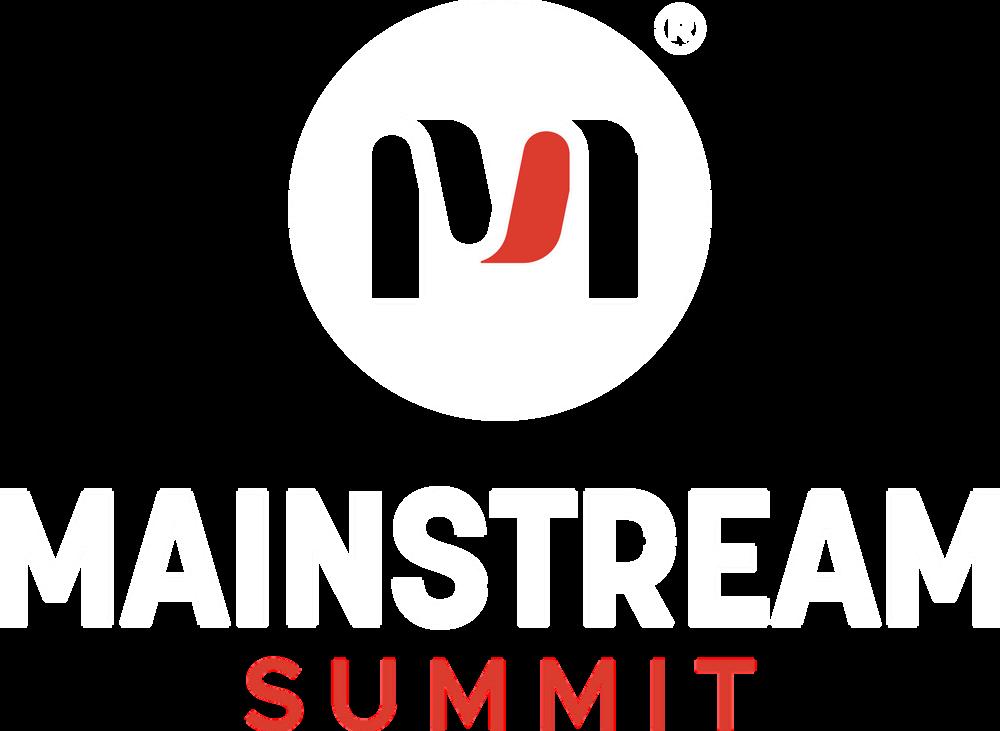
18 March 2026
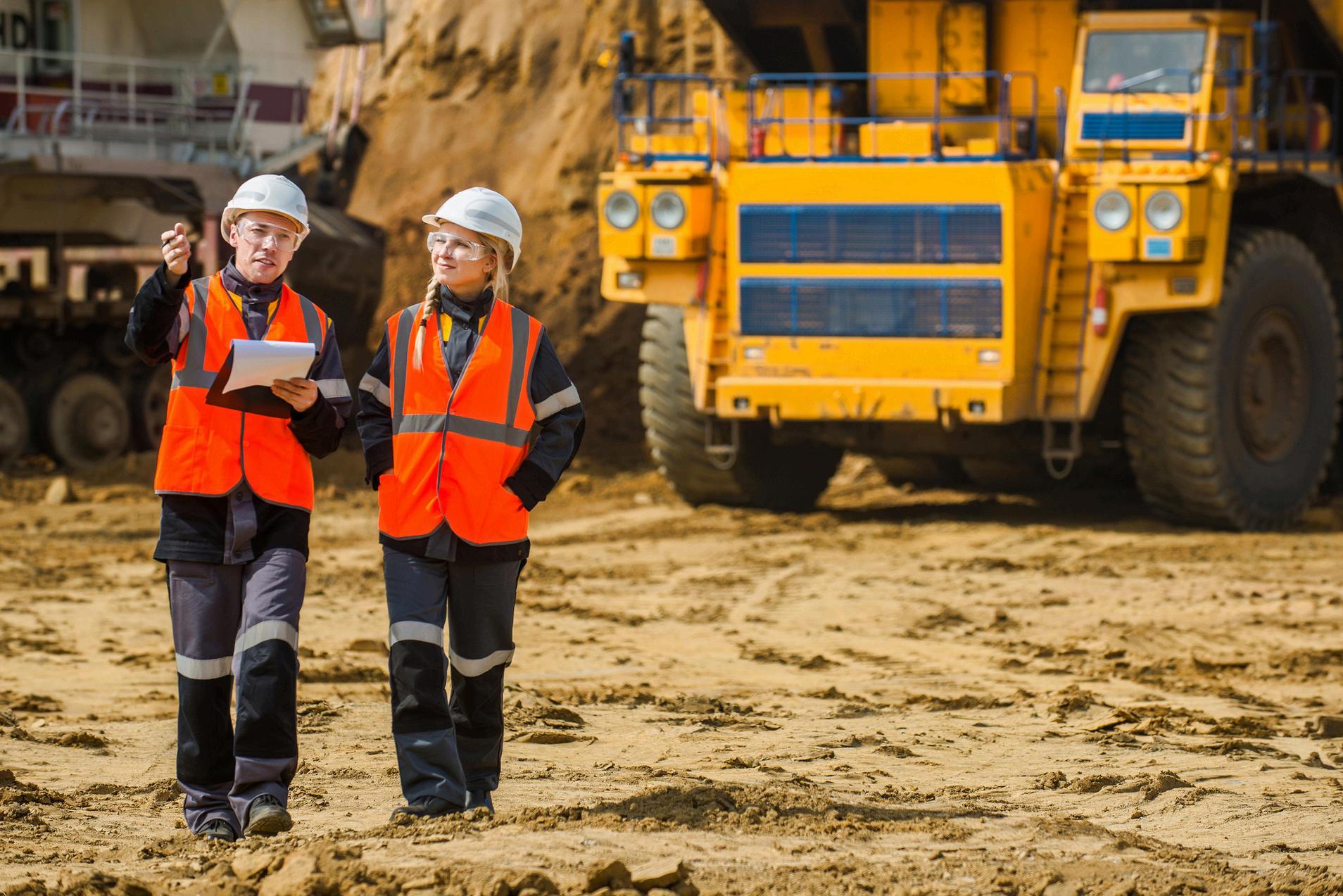



18 March 2026


From Managing Asset Data to Decarbonisation; and Future Maintenance Workforce to Work Management Fundamentals
– MAINSTREAM is not your average conference.
Join the MAINSTREAM Community for an amazing day of content, networking, knowledge-sharing and fun as we celebrate the people, technology and ideas transforming asset management
MAINSTREAM acknowledges the Whadjuk Nyoongar people as the Traditional
Owners of the lands and waters where PCEC is situated today We pay our respect to the ancient and continuing cultures and connections to land and to Elders past, present, and emerging

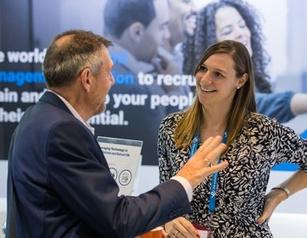
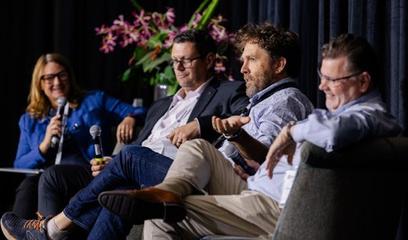

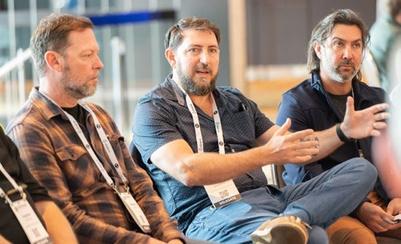

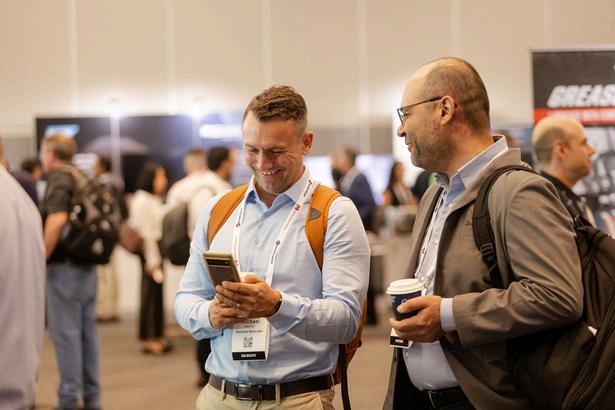
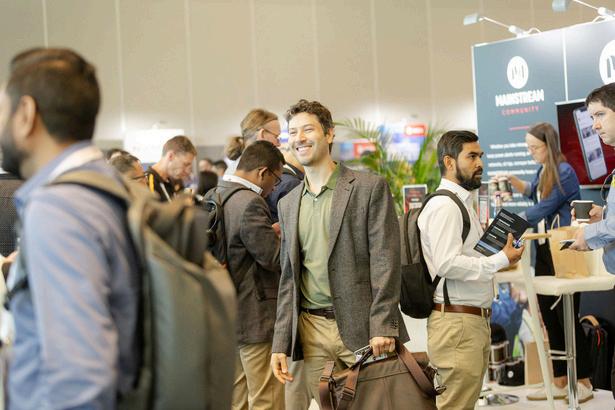
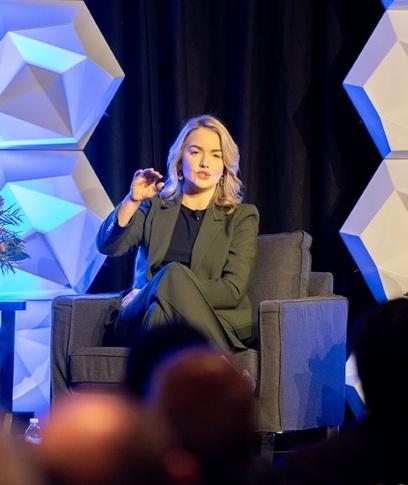





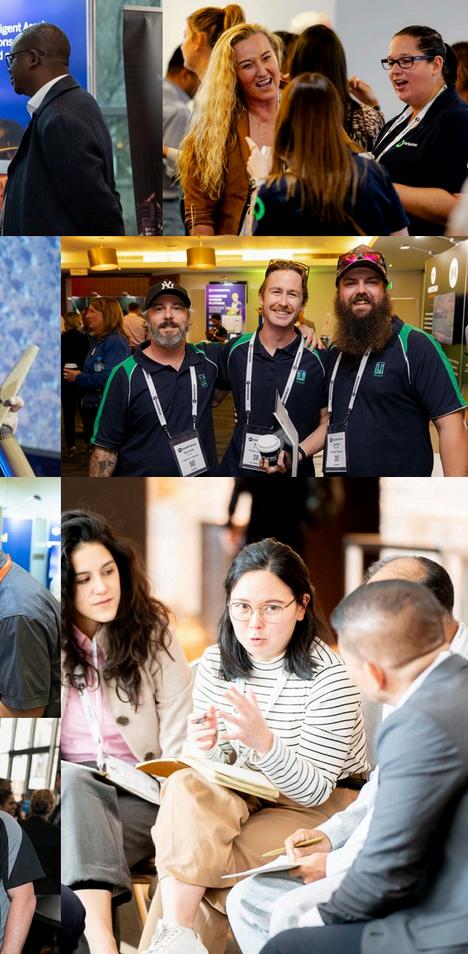
“MAINSTREAM is the best Asset Management and Reliability Conference in the world.”
Contributing Editor, Reliable
Accenture
Accruent
Agili8
AiSpanner
Alcoa
AngloGold Ashanti
aptGroup
Aquip
Asset Schools
Assetivity
Aurecon
Aurizon
Ausforming
Australian Gas Infrastructure Group
Baker Hughes
Bentley Motors (UK)
BetterAIM
BHP
BPD Zenith
BIS Industries
BlueCats
BlueScope
Brilliant at Basics
Bureau Veritas
Byrnecut Mining
Capgemini
C-Insight
CBH Group
Chevron Australia
Citic Pacific Mining
Conifr
COSOL
Covalent Lithium
Covaris
Crystalise
Curtin University
Cyient
Deloitte
DKSH
Downer
Enerven Energy Infrastructure
Engie Australia
EnterpriseIS
EXTAG
Fortescue
Fremantle Ports
GHD Advisory
GMA Garnet
Gold Fields
GreaseBoss
GTE
Hancock Iron Ore
Hatch
Holistic Asset Management
I-care Reliability
IBM
Information Quality
Innovapptive
INPEX
IntelliPERMIT
Lead Asset Management
Leading Edge Solutions
Luckshaw Consulting
Machinemonitor
Macmahon
Maintenance Innovators (USA)
Mana Consulting (NZ)
Meshed IoT
Mid West Ports Authority
Mineral Resources
Monitra Australia
Mr Meditate
Naviam
Newmont Australia
Northern Star Resources
Nova Energy Consulting
NVMS
Obzervr
Omega365
Orbiz
Pilbara Ports Authority
PM Eleven
Prometheus Group
Prospecta Software
Public Transport Authority of WA
Qantas
Rio Tinto
Rizing EAM - a Wipro Company
RM Surveys
RocketDNA
Rockfield Technologies
RPMGlobal
Santos
SAP
Sandvik
Sedgman Limited
Shell
Simcoa Operations
SMSi
South32
South32 Worsley Alumina
Southern Ports
Spectro Scientific
Speno Rail Maintenance Australia
Synergy Group
Tomago
Talison Lithium
Total Mobile Solutions
Town of Port Hedland
TradeMutt
Two6 Services (UK)
University of Western Australia
Verbrec Asset Management
Vexillum
VLI Conveyors
Water Corporation of WA
Welding Quality Management Systems
WesCEF
Western Power
Wood PLC
Woodside Energy
O7:15 – 08:00 07:45 – 17:00 1 7 / 0 3 1 8 / 0 3
Tuesday Wednesday
17:00 – 18:30 17:00 – 18:30
• Speaker Briefing
• Registration, Networking & Expo
• Summit Opening
• Vision Stage
• Asset Stage
• Reliability Stage
• Maintenance Stage
• Technology Stage
• Innovation Theatres
• Education Pavilion
• Networking Drinks, Canapes & Expo
Curated Content Across 7 Tracks
Access to all Keynotes, Breakouts and Demos
Lunch, Morning & Afternoon Teas
The Networking Function
Mobile App
Year-round membership to MAINSTREAM Community Online Platform
Searchable Attendee List
Access to all Content After the Event
MAINSTREAM offers you FOUR different formats for learning, capability development, interactivity, and knowledge.
1
Keynotes
45 mins
Strategic discussion on industry shaping challenges. Thought-provoking sessions that tackle broad issues.
2
Case Studies
35 mins
3
Innovation Theatre
15 mins
Practitioners share their perspectives and battle-tested approaches to business challenges revealing triumphs, lessons learned, and tangible results.
Rapid-fire demonstrations, new solutions showcasing the latest apps, products, and technologies poised to transform asset, equipment, and workforce management.
4
Interactive Panels
60 mins
Panellists from different companies and industries collide with varied viewpoints and diverse perspectives and experiences
While 72% of Australian asset-intensive organisations are racing to implement AI in maintenance and reliability, only 23% are seeing meaningful returns This isn't a technology problem It's an organisational one, and it's not limited to this industry. The companies winning with AI aren't just deploying smarter algorithms; they're fundamentally restructuring how humans and machines collaborate, make decisions, and create value.
With practical examples, you'll discover why organisations are struggling with AI projects and how those that are thinking beyond the pilot are more rapidly able to unlock the potential that AI promises. Drawing from real-world case studies across a variety of industries, we'll explore:
Regardless of your role, this session will help you influence your organisational roadmap for turning AI potential into operational reality. Be the person who uses AI to your advantage, not the person who has the fear of being obsolete
The gap between the promise and reality with AI
What foundational elements are critical for success
The key enablers for the human-AI workforce of the future
Practical strategies to build AI readiness
Climeworks is pioneering direct air capture (DAC) technology to permanently remove CO₂ from the atmosphere As both OEM and owner-operator, they face the dual challenge of designing frontier technology for high reliability while defining maintenance practices for equipment operating in Iceland's harsh conditions High uptime is critical to reducing carbon removal costs and achieving profitability
Doug's career spans maintaining critical rotating equipment on ExxonMobil's offshore platforms, commissioning gas turbines and centrifugal compressors for Solar Turbines Australia, and scaling manufacturing as Director of Manufacturing at Tesla, directly reporting to Elon Musk. He now applies these lessons to making carbon removal economically viable at Climeworks
What is direct air capture and how it works
How to overcome the challenges of designing and deploying first-of-a-kind technology
Influencing R&D and equipment design to deliver a safe and reliable product
How to build a maintenance & reliability team to service nascent technology in remote locations
Convincing the executive team to see high availability as a value, not a cost
Using data and technology to completely alter the way we do maintenance has never been so topical as it is today, and yet, we haven’t really seen any big transformations in this space to date On one side, we have an overload of available data, to enable us to make these radical changes, and on the other, we have foundational work practices, that can significantly impact the usefulness and accuracy of this data, and in turn, the positive impact in the maintenance domain.
1.The importance of strong work practices, in the realms of quality data
2 Why do work management processes fail
3.Some key actions you can take to address these gaps
4.How better data from a strong foundational base can improve pace of change in maintenance
5.Worked example of this in practice
Australian industrial organisations are facing critical workforce, knowledge, and capability gaps. With 62% reporting acute shortages in maintenance and reliability roles, and nearly 40% of technical knowhow leaving annually due to retirement and turnover, retaining skills isn’t just an HR issue, it’s an operational imperative
This session explores practical methods for translating core competencies into everyday capability, bridging generational knowledge divides, and building resilient teams ready for evolving digital, decarbonisation, and business demands.
Attendees will walk away with actionable ideas for keeping knowledge in-house, reducing costly misalignment, and unlocking real business impact
This session explores how reliability at DP World has evolved from a tactical task into a global movement powered by people Across more than sixty countries, we’ve built a culture that’s human-centered and technology-enabled, united by a shared language that starts on the terminal floor and reaches the executive office
Our journey began in 2013 with the arrival of our first reliability engineer Since then, reliability has grown —not just in numbers, but in mindset. Today, thousands across our ports and terminals speak the language of reliability with purpose, pride, and conviction. The movement continues to expand, creating champions who look beyond their own sites, support others, and learn from each other’s strengths Together, they’re building a culture where reliability is more than a function it’s a unifying force across regions and roles
In this session, you’ll hear the voices of our people, sharing real stories that answer the questions many reliability professionals ask themselves helping them connect the dots, find clarity, and shape the next step in their own reliability journey
Developed a performance reporting framework identifying trends, gaps and opportunities
Shifted team culture toward continuous improvement and customer impact
Enhanced transparency with timely updates to external stakeholders
Refined recovery planning for real-time decisions balancing reliability and throughput
Implemented proactive measures in a reactive environment
Established a team mindset that maximizes decision-making under time pressure
Used data and communications to support both planned and unplanned situations
Maintenance is no longer just about keeping the lights on. How you manage your assets directly impacts your company's bottom line and market position This presentation shares the real story of transforming a reactive maintenance operation into a reliability-focused organisation.
Phil is the Chief Maintenance Officer at United Utilities, the UK's largest listed water company. Phil will walk you through what actually worked, what didn't, and the hard-earned lessons from building a structured excellence program from the ground up.
Baseline Assessment – Getting an accurate picture of where you really stand (not where you think you stand) in terms of maintenance practices, skills gaps, and organisational readiness
Building Your Roadmap – Creating a practical transformation plan with realistic milestones and getting buy-in from operations, finance, and the shop floor
Dealing with Reality – Why your plan won't survive first contact, and how to adapt when priorities shift, resources get cut, or equipment breaks at the worst possible time
Getting Everyone Speaking the Same Language – Breaking down silos between maintenance, operations, and engineering so reliability becomes everyone's job
Upskilling Your Team – Practical approaches to training and knowledge transfer that actually stick
Leading Through Change – Maintaining credibility while driving improvement, dealing with septics, and recognizing progress along the way
It’s AI Jim, but not as we know it. The first generation of the AI revolution has delivered some well-worn paths in advancing the science of condition monitoring, improving our ability to diagnose, predict and track asset health. But the delivery of real outcomes from this has been patchy. For every Rolls Royce there are half a dozen tales of woe A thousand seeds never germinating Promises stuck in pilot purgatory. Ivory tower technology teams that never made it into the field, working on problems that nobody cares about, while site teams continue to trudge through a wasteland of broken SAP forms and unmanaged master data.
The opportunity: the next generation of AI technologies will continue to transform what is possible Agents and GPT-type AI models offer the potential to extend the art of the possible from narrow analytical and predictive tasks into the flexible automation of the broader asset management workflow
Our challenge: driving the asset management transformation required to deliver on this promise will grow increasingly complex, as the range of skills, technologies and teams required to deliver measurable outcomes grows increasingly diverse.
In this session we will take you through the promise of AI 2.0, the potential for the frontier of asset management and explore some examples and lessons learned in delivering these outcomes in the field from two and a half years within Fortescue.
Managing rail shutdowns comes with several key challenges, many of which are common across industries The challenges faced required significant change management, stakeholder engagement and problem solving. There was a disconnect in the team around buy-in for what is best for business, lacking a customer focused approach, and a change resistant attitude Additionally, there was a perception that closure performance was consistently poor/overrunning against plan and a lack of data to verify or analyse if this perception was reality
Coming from a mining background into rail, I identified that these challenges required a data approach, shift in team mindset and stakeholder engagement
Over the last 12 months, we have: Superintendent Integrated Closures, Aurizon
Developed a performance reporting framework identifying trends, gaps and opportunities
Shifted team culture toward continuous improvement and customer impact
Enhanced transparency with timely updates to external stakeholders
Refined recovery planning for real-time decisions balancing reliability and throughput
Implemented proactive measures in a reactive environment
Established a team mindset that maximizes decision-making under time pressure
Used data and communications to support both planned and unplanned situations
Most asset management processes and deliverables can be traced back to five fundamental corporate datasets. Consequently, the scope and quality of these datasets act as a limiting factor – they predetermine how far up the asset management maturity curve an organisation is capable of progressing.
Unlike other limiting factors in asset management (strategy misalignment, lack of resourcing, etc ) dataset limitations are often intractable and require large investments in time, capital and organisational change management to alleviate
A 2025 MIT report highlights that 95% of AI pilots have failed. The data landscape in industrial asset management is growing not only in volume, but also in complexity. At the same time, expectations for data to be Findable, Accessible, Interoperable, and Reusable (FAIR) are rising rapidly.
The lesson here is clear For future Enterprise AI to be successful, we need to find practical ways to manage an increasingly inconsistent and fragmented data landscape.
In this talk we discuss the role of Linked Data in the future of industrial asset management. We explore how the existing Semantic Web framework, including the Resource Description framework (RDF), underpins successful enterprise AI and give practical guidance to Linked Data implementation in industry.
The 2025 Data Landscape in Industrial Assert Management
An introduction to Linked Data and the Semantic Web framework
The role of Linked Data in future enterprise AI with industry examples
Practical guidance and first steps for organisations implementing a Linked Data strategy
Maintenance builds often emphasise data loading over long-term reliability. In Pluto Train 2, we reversed that approach by embedding reliability principles from the start aligning maintenance strategies, spares, and procedures with operational needs. Structured against ISO 14224 standards, the build achieved consistency, compliance, and a strong foundation for analytics This reliability-first strategy delivered seamless Day 1 operations, minimised rework, and created enduring asset performance.
Applied key reliability techniques across large equipment base
Built fit-for-purpose maintenance build tool to support planning
Conducted on-site equipment surveys to fill critical data gaps
Structured data in alignment with ISO 14224
Integrated assurance processes to reduce handover risks
When veteran technicians face unfamiliar digital interfaces, or planners must adopt workflows designed by IT professionals who've never executed a work order, adoption failures become inevitable
Enterprise systems and major digital transformation projects that are designed to optimise reliability, often create complexities that undermine the very performance they promise to deliver. This session explores why digital transformation in maintenance and asset management frequently falls short, and what it takes to bridge the gap between technological capability and frontline adoption.
Organisations operate disparate systems, with some managing 100’s of applications.
System transitions often trigger "data degradation" with new platforms paradoxically producing lower-quality maintenance records than the legacy systems they replace.
Technicians spend more time navigating systems than maintaining assets, eroding reliability performance.
The core issue isn't tech: it's the collision between sophisticated enterprise platforms and diverse workforces spanning generations and skill sets.
Parallel systems can build confidence rather than force abrupt transitions.
Peer-based training using respected tradespeople as champions, not IT staff explaining workflows they've never performed
Field-first design for mobile devices, gloved hands, and industrial environments, where maintenance happens.
Small-scale validation that proves value to sceptical crews before enterprise-wide rollout.
Introducing change in any organisation is challenging. Doing so in a large recently merged electricity distribution utility with different people, processes, and systems might seem even more challenging Doing all of this in addition to your day job seems downright crazy.
Take a trip down the rabbit hole as we explore an example of doing just this, introducing new systems and thinking to systematise asset management and risk management benefits for an organisation, and surfacing asset management insights for actionable decision making.
Leading strategic change in engineering-focused organizations
Understanding personality types and change tolerance in technical environments
Thinking like your customer and asking the right questions
Finding the optimal pace of change for your organization
Defining and measuring success throughout the transformation
Embedding change while pushing boundaries for continuous improvement
Keeping implementation simple and avoiding perfectionism
Surrounding yourself with the right people to drive change.
This keynote frames reliability in financial terms - highlighting how a well-executed reliability management strategy influences profit, return on net assets (RONA) and share price. You will see the difference between the industry leaders and laggards and learn how to close the gaps to turn the potential benefits into real profit. This is not a maintenance seminar. Rather, we take a cross functional look at reliability management and link it to key financial performance indicators
Relate plant reliability to profit, return on net assets (RONA), share price and other key financial performance indicators
See the cross-functional nature of process reliability management – it is not all about maintenance.
Move beyond thinking in terms Overall Equipment Effectiveness (OEE) to Overall Business
Effectiveness (OBE) to manage reliability across the entire value stream
Delve into the human factors of failure, including psychological and social psychological drivers.
Design for reliability, maintainability, operability, and flexibility the genetic code of the manufacturing process
Operate for reliability, including supply chain management and customer/SKU rationalisation
Maintain for reliability.
Deploy a comprehensive and lasting reliability management strategy that drives value for your shareholders
Drew Troyer
Contributing Editor, Reliable (US)
What happens when you’re asked to make high-stakes decisions in an area where you’re not the expert?
For this speaker, it was being tasked with cutting eight positions in a department that was already stretched thin. The imposter voice was immediate: “You don’t know enough to get this right.”
Drawing on real past experience as a superintendent and knowing that stretching leaders across multiple sites would erode culture Instead, making the call to restructure creating distinct pathways for both technical mastery and leadership.
The solution brought its own challenges: leaders without deep technical expertise struggled to earn credibility. It became clear that leadership is never about knowing everything. Whether you’re an insider or outsider, it’s about making the best possible decision with the information you have, and building structures that sustain your people.
Hear how the “outsider lens” became an asset. By reframing control systems as a form of asset management, not only reshaping our strategy but also earning the respect of the very toughest critics The experience revealed that imposter syndrome tends to shout the loudest when the stakes are highest but that tension is also evidence of growth
This session will explore how to navigate the imposter–innovator paradox, showing that leadership is less about having all the answers and more about owning your choices, learning from their consequences, and building trust along the way.
Too often, asset management and capital project teams work in isolation, creating misaligned priorities, inefficiencies, and lost opportunities By embedding asset management principles into project delivery, organisations can build assets that perform better, cost less over their lifecycle, and deliver sustainable value
In this presentation, I’ll share my experiences from the mining sector where engineering, strategy, and asset management converged. From value engineering and brownfields development to handling shifting schedules and stakeholder demands, I’ll demonstrate how collaboration between asset owners, asset managers, and project teams can drive smarter decisions and stronger long-term performance
Every 16 weeks, major fixed plant shutdowns at Newman mobilises large teams of transient workers to complete complex, high-risk maintenance activities under tight schedules While essential for reliability, these shutdowns faced challenges with productivity and consistency due to varied workforce experience and site familiarity
After conducting time-in-motion studies, we identified that a great deal of lost time was caused by unstructured problem-solving and delays in starting work. In response, we introduced two key initiatives designed to strengthen communication, accountability, and team culture:
The 30/30 Rule: After 30 minutes of problem-solving without progress, teams escalate to their supervisor, and after another 30 minutes, to the Shutdown Coordinator This encourages collaboration and breaks down silos.
6:45 Work Front Start: Setting the expectation for teams to be at the work front by 6:45 each shift increased tool-time and improved shift rhythm.
In this session we will highlight how these initiatives delivered a >10% uplift in tool-time per shift, enhanced engagement, and reinforced a “safe to speak up” culture We’ll hear how setting clear expectations, building capability through coaching, and fostering respect and inclusion, we have been able to create meaningful cultural and performance improvements now being replicated across other WAIO operations.
Aarunya Dave
Meeting sustainability goals is changing how organisations operate - and calling for new skills, knowledge, and ways of working
In this panel, four industry leaders from power generation, transport, mining will share what they’re seeing right now: the real challenges of keeping older assets running while introducing new low-carbon technologies to achieve targets From balancing business demands with long-term sustainability to tackling critical skill shortages, we will discuss how teams are managing these pressures day to day. The discussion will cover:
How decarbonisation targets are reshaping maintenance and reliability roles
The biggest skill and knowledge gaps across industries
How companies are retraining and upskilling their people
Practical steps for managing mixed asset portfolios during the transition
This session goes beyond policy to focus on people - the engineers, fitters, technicians, and leaders adapting to change every day. Exploring how developing the right skills and mindset today will shape the success of Australia’s sustainable industrial future
Asset-intensive organisations have invested heavily in enterprise asset management systems and condition monitoring infrastructure, yet most operational data remain underutilised This presentation challenges the conventional centralised analytics approach and introduces edge federated machine learning as a transformative architecture for physical asset management
Drawing from real-world implementations across Australian transport, ports, and heavy industry, this session demonstrates how edge computing combined with federated learning solves four critical barriers to intelligent maintenance:
isolated asset knowledge that prevents fleet-wide learning data silos across facilities that block insight sharing cloud analytics latency that misses split-second failure indicators privacy concerns that lock away valuable operational data
This presentation draws on the Commercial Management module of Shutdown School to address critical financial pitfalls associated with major shutdown events, where costs can represent 60–80% of an annual maintenance budget. Shutdowns frequently rely on transient contractor resources, which introduce significant risks related to uncontrolled scope growth and unexpected cost increases
We will explore best practices to ensure precision of scope from the outset, moving beyond imprecise work definitions that lead to inflated manning levels and unnecessary fees.
The session will detail how to:
Define and defend the scope of work from initiation through execution, specifically managing tensions related to variations and scope creep that arise when contractors seek work for placed labour
Establish transparent commercial arrangements that scrutinise management overhead (recommended not to exceed 15% of total shutdown cost), supervision/ fixed cost items (recommended not to exceed 20%), and material mark-ups.
Align contractor systems with CMMS /EAMS to facilitate detailed, accurate cost tracking and timely reconciliation. This includes ensuring that contractor payments are only processed when corresponding work order feedback meets a satisfactory standard
Implement robust work quality control measures to mitigate the inherent risk associated with contract labour new to the site or type of works, ensuring quality assurance to prevent reliability issues postshutdown
This session will show how disciplined commercial control transforms the preparation phase from a financial risk into a mechanism that enforces scope compliance and drives down overall shutdown cost
Artificial Intelligence is reshaping the conversation in maintenance and reliability, promising predictive accuracy, automated insights, and data-driven transformation Yet, across industries, a consistent reality is emerging: AI initiatives often falter not because of the technology itself, but because of the organisational, cultural, and infrastructure barriers that surround it While 72% of asset-intensive organisations are exploring AI applications, more than three-quarters fail to achieve expected returns — revealing a growing gap between business ambition and operational readiness
Many organisations underestimate the infrastructure required to support AI. From insufficient network capacity to unprepared data environments, implementation frequently exposes foundational weaknesses rather than delivering breakthroughs. Participants describe cases where “intelligent” systems crashed networks or overwhelmed servers, and where data streaming requirements far exceeded what existing IT environments could sustain. The lesson is clear: before AI can transform maintenance, the groundwork infrastructure, governance, and data integrity must be solid
This panel will bring together industry experts who have navigated both the promise and pitfalls of AI in maintenance. Panellists will discuss what separates successful implementations — such as drone-based inspections, automated defect detection, and predictive analytics from those that stall Attendees will gain insight into the cultural, technical, and ethical dimensions of AI adoption, and how to prepare their organisations for meaningful, trustworthy integration. The session invites an honest conversation about what it truly takes to move from AI hype to operational value.
Greg Taylor
Director of Human Centred Change, Salesforce
Michelle Ash CEO, Simulia Brock Reynolds
Senior Manager
Integrated Operations AI Delivery, Fortescue
Jason Apps Managing Director, Industry X, Accenture
Alex Jenkins Director, WA Data Science Innovation Hub
Across industries, maintenance and reliability professionals face a growing paradox: organisations have more operational data than ever, yet decision-making confidence is falling. Despite advanced systems, teams spend more time validating or reconciling data than interpreting it. This session explores the widening gap between data collection and data utilisation across mining, energy, utilities, and infrastructure sectors.
Rapid digitisation has created not just data abundance but also fragmentation, inconsistency, and loss of historical context Field technicians and engineers are increasingly burdened by data entry and quality control, leading to a shift where technology overshadows intuition and poor data erodes trust in analytics and maintenance decisions
Our panel of will unpack the root causes of this “data quality versus quantity” issue Through real-world cases, they will show how governance frameworks, data purpose, and quality standards can turn raw information into actionable intelligence Participants will explore how aligning data strategies with business needs restores trust and ensures every data point adds value. By challenging assumptions about digital maturity, this session reframes “data-driven” as a focus on relevance, not accumulation charting a path to renewed confidence and clarity in maintenance data ecosystems
The MAINSTREAM Community faces one of the biggest workforce challenges in its history. Automation, electrification, and decarbonisation are reshaping how we work, demanding a new kind of Maintenance and Reliability (M&R) leader with strong technical, analytical, and people skills.
To keep pace with rapid technological change, we must accelerate how we innovate and build cultures that embrace collaboration, co-creation, and adaptability This panel will explore the critical role of people and competencies in shaping effective M&R leadership and how developing these skills drives operational excellence, safety, and sustainability. Key themes include:
Operational Efficiency Through Competence: How data-driven maintenance strategies - preventive, predictive, and corrective - boost performance and reliability
Leadership and Team Development: Building high-performing teams through communication, mentoring, and trust
Culture and Soft Skills: Embracing change, strengthening partnerships, and valuing soft skills as much as technical expertise
Industry experts will share practical insights and lessons learned to help current and aspiring leaders align people, technology, and culture to build a workforce ready for the future of maintenance and reliability.
VP Asset Management & Process Plant - Group Engineering & Maintenance, Anglo American
Shutdowns are complicated projects that bring together hundreds sometimes thousands of transient workers, tight schedules, strict budgets, and enormous safety responsibilities The pressure to perform can create a cultural dilemma: how do we drive productivity without compromising safety, or even the perception of it?
This panel brings together shutdown leaders to explore the realities of managing large, fast-moving teams in an environment where every hour counts. We’ll look at what’s working, what’s not, and what needs to change. How do we build high-performing teams made up of people who may not share the same values, systems, or ways of working — and how to do it without letting standards slip or culture turn toxic.
Our panellists will discuss how leaders can set expectations, maintain accountability, and show empathy under pressure We’ll examine what good leadership really looks like when time, cost, and safety all compete for attention, and what practical steps are helping organisations deliver shutdowns more safely, efficiently, and sustainably
Chris Ryde
Twenty years ago, conversations about diversity in the workplace were often restricted to policy documents and HR initiatives Today, they’re part of everyday life on the shop floor, in the boardroom, and everywhere in between. People want to feel that they belong and that who they are and what they bring to the table truly matters Whether you’re leading a team, managing a site, or working on the tools, everyone wants to be respected, listened to, and valued for their contribution.
In this panel, we’ll explore how diversity, equity, and inclusion (DEI) have evolved from being “something organisations should do” to something that everyone feels.
We’ll look at what’s changed and what still needs to change to create workplaces where people at every level feel seen, supported, and empowered to do their best work
Our panellists will share real experiences and insights on:
What inclusion looks and feels like right across the community not just in leadership statements
How to build trust and belonging between management, supervisors, and teams on the ground
Practical ways to recruit, develop, and keep people from all backgrounds
How fairness, respect, and open communication help everyone bring their best selves to work
We’ll also explore how DEI is no longer a top-down initiative. The best ideas and the most meaningful change often come from conversations on the shop floor from the people who live it every day. Together, we’ll talk about how organisations can listen better, measure what really matters, and create environments where everyone regardless of title, background, or role feels part of something bigger.
Human error remains one of the leading causes of safety incidents, equipment failures, and costly downtime Often, the issue lies not with individuals but with the systems, culture, and processes that shape how work gets done.
This panel unites maintenance leaders, asset managers, and human factors experts to explore how understanding the psychology of maintenance can improve both safety and operational reliability
Through real-world examples panellists will share how organisations are looking to identify, manage, and prevent human error while building a safer, more accountable culture.
Key discussion points include:
Embedding asset management into capital delivery for safer, more reliable outcomes
Exposing the hidden cost of disconnecting projects from asset strategy
Using Value Engineering to align owners, managers, and project teams
Managing change without compromising safety or performance
This session offers practical insights into integrating human factors, asset strategy, and safety leadership helping organisations move beyond managing error to designing cultures and systems that enable people to perform safely and effectively.







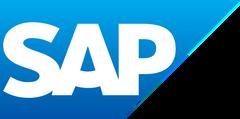
















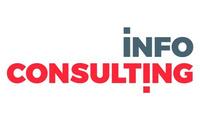







18 March 2026
*Standard rate is $2700 per person. With the 2-for-1 special, it’s $1350 per person. This special offer is available until 5 December only.
Until 5 December
2-for-1* Special
$1,350
Get
Standard Rate 2,700 Per person +GST
MAINSTREAM Summit in 2 minutes

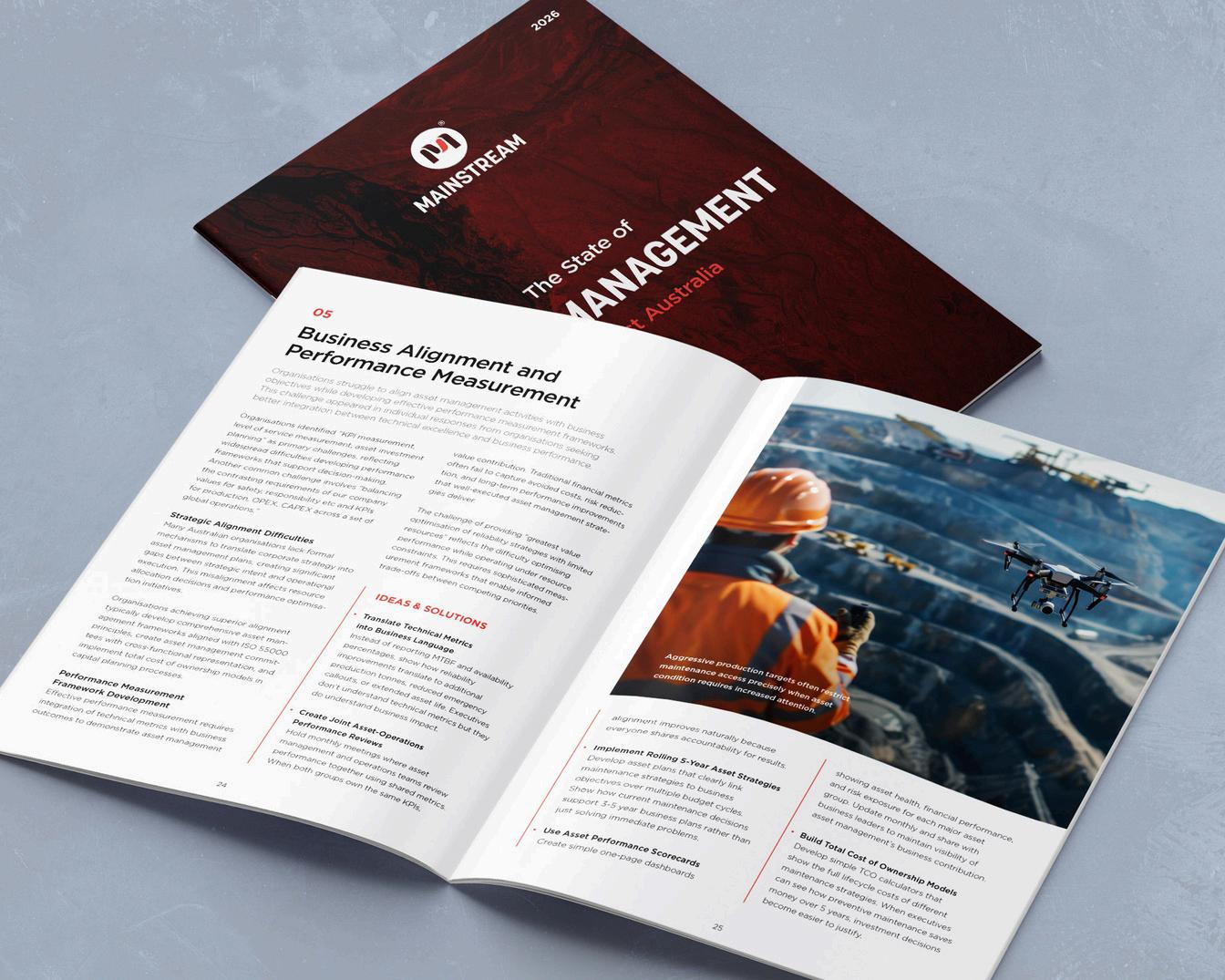
Download your report to understand best practices, compare your companies’ performance and working environment to those inside and outside your industry, and make informed and effective decisions around your assets and your people.
Go to:
https://www.mainstreamcommunity.com/summit/topics

MAINSTREAM Founder
+61 411 883 266
lisa@mainstreamcommunity.com
Community Engagement Manager
+61 474 446 696
meike@mainstreamcommunity.com

Ian Collier
Program Director
+44 7901 150 405 ian@mainstreamcommunity com
Ansumi De Bruin
Community Manager
+27 837 002 282
ansumi debruin@mainstreamcommunity com
Director of Partnerships
+61 433 755 653
guy@mainstreamcommunity.com
Speaker Care Manager
+61 418 876 286 val@mainstreamcommunity.com

https://www.mainstreamcommunity.com/summit/home